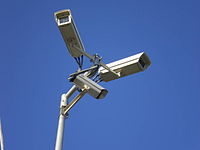
Photo from wikipedia
Background Measles is a vaccine preventable, highly transmissible viral infection that affects mostly children under five years. It has been ear marked for elimination and Nigeria adopted the measles elimination… Click to show full abstract
Background Measles is a vaccine preventable, highly transmissible viral infection that affects mostly children under five years. It has been ear marked for elimination and Nigeria adopted the measles elimination strategies of the World Health Organization (WHO) African region to reduce cases and deaths. This study was done to determine trends in measles cases in Bayelsa state, to describe cases in terms of person and place, identify gaps in the case-based surveillance data collection system and identify risk factors for measles infection. Methods We carried out a secondary data analysis of measles case-based surveillance data for the period of January 2014 to December 2018 obtained in Microsoft Excel from the State Ministry of Health. Cases were defined according to WHO standard case definitions. We calculated frequencies, proportions, estimated odds ratios (OR), 95% confidence intervals (CI) and multivariate analysis. Results A total of 449 cases of measles were reported. There were 245(54.6%) males and the most affected age group was 1–4 years with 288(64.1%) cases. Of all cases, 289(9.35%) were confirmed and 70 (48.27%) had received at least one dose of measles vaccine. There was an all-year transmission with increased cases in the 4th quarter of the year. Yenegoa local government area had the highest number of cases. Timeliness of specimen reaching the laboratory and the proportion of specimens received at the laboratory with results sent to the national level timely were below WHO recommended 80% respectively. Predictors of measles infection were, age less than 5 years (AOR: 0.57, 95% CI: 0.36–0.91) and residing in an urban area (AOR: 1.55, 95% CI:1.02–2.34). Conclusions Measles infection occurred all-year round, with children less than 5 years being more affected. Measles case-based surveillance system showed high levels of case investigation with poor data quality and poor but improving indicators. Being less than 5 years was protective of measles while living in urban areas increased risk for infection. We recommended to the state government to prioritize immunization activities in the urban centers, start campaigns by the 4th quarter and continue to support measles surveillance activities and the federal government to strengthen regional laboratory capacities.
Journal Title: BMC Public Health
Year Published: 2020
Link to full text (if available)
Share on Social Media: Sign Up to like & get
recommendations!